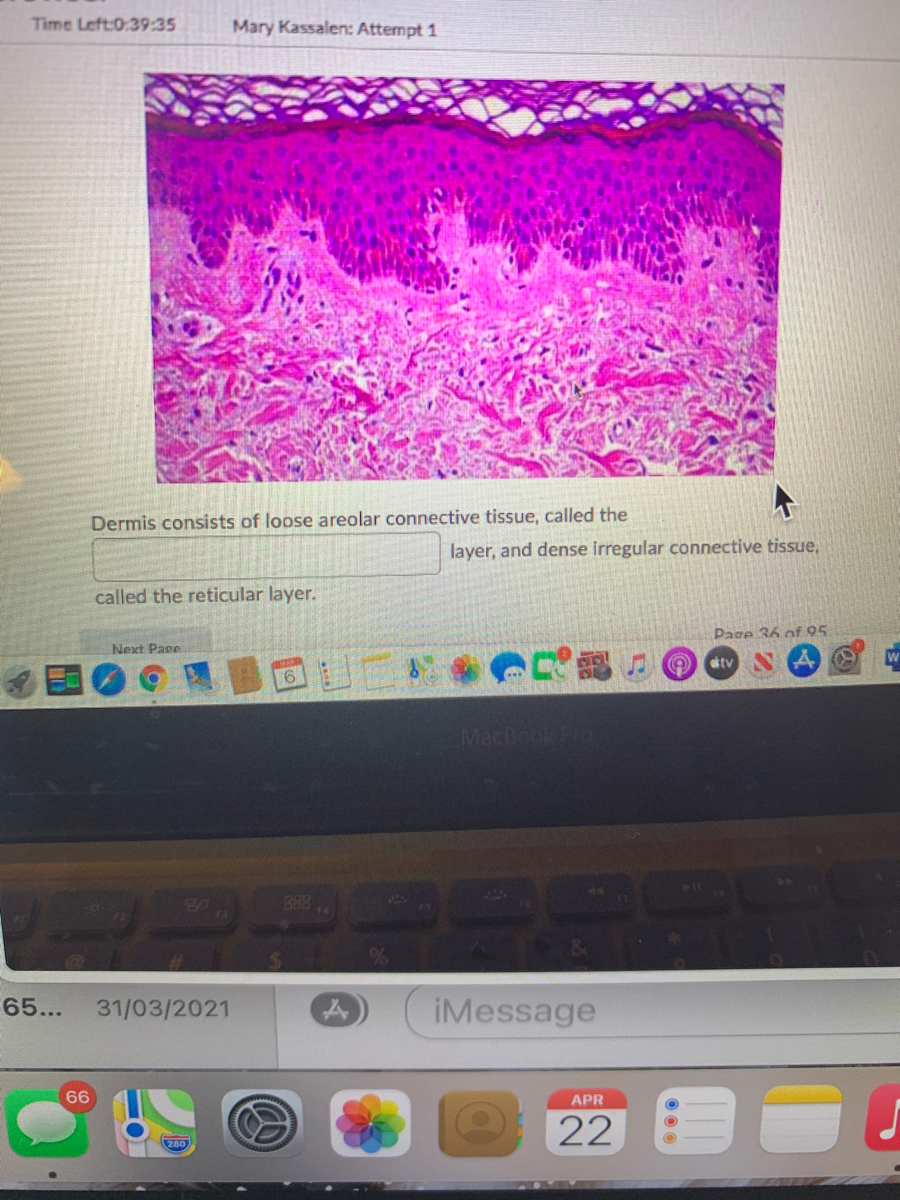41 drag each label to identify which glands would be responsible for each description.
PDF The Urinary System - Pearson The renal cortex and renal medulla of each kidney contain over one million microscopic filtering structures called nephrons. Nephrons are the functional units of the kidney—each one is capable of filtering the blood and producing urine. Figure 24.3 b shows the basic structure of a nephron, which consists of two main Endocrine system - List Of Endocrine Glands & Functions | Byju's The parathyroid glands consist of four small glands that are located behind the thyroids in the neck. They influence the calcium levels in the body by producing a hormone called Parathyroid Hormone. Sometimes, when the gland produces excess parathyroid hormones, it can have negative effects such as brittle bones and kidney stones. Adrenal glands
15.1 Divisions of the Autonomic Nervous System - OpenStax The autonomic nervous system regulates many of the internal organs through a balance of two aspects, or divisions. In addition to the endocrine system, the autonomic nervous system is instrumental in homeostatic mechanisms in the body. The two divisions of the autonomic nervous system are the sympathetic division and the parasympathetic division.

Drag each label to identify which glands would be responsible for each description.
Anatomy & Physiology: The Unity of Form and Function - Quizlet Drag each label to identify which glands would be responsible for each description: MONOAMINE • Dopamine • Norepinephrine • Thyroid Hormone. ... Drag each label to identify which glands would be responsible for each descriptive role or function: PANCREAS and/or ADRENALS Chapter 16 - Digestive System Processes and Regulation - BIO 140 ... Discuss six fundamental activities of the digestive system, giving an example of each Compare and contrast the neural and hormonal controls involved in digestion The digestive system uses mechanical and chemical activities to break food down into absorbable substances during its journey through the digestive system. Drag each label to identify which glands would be responsible for each ... Endocrine glands are part of our endocrine system that is responsible for making hormones and release them into our bloodstream. These hormones control a number of important functions in your body, such as growth and development. So we can conclude that endocrine glands are responsible for the descriptive function in our body.
Drag each label to identify which glands would be responsible for each description.. Sign In - Ivy Tech Community College of Indiana Reset or Forgot Password Need help? Call 1-888-IVY-LINE (option 4). Eye Quizlet Labeling Zygomatic Bone 13 The 6 to 7 million cones provide the eye's color sensitivity and they are much more concentrated in the central yellow spot known as the macula Select different colors for the bone regions listed at the coding circles below (Label your answer with the proper units Ear part identification and labeling for labratory test learn with flashcards games and more for free Ear part ... Endocrine System Organs, Glands | Hormones and Metabolism The pancreas is a gland of both the digestive and endocrine systems. As an endocrine gland, it produces several important hormones, including insulin, glucagon, somatostatin, and pancreatic polypeptide. It secretes pancreatic enzymes that facilitate digestion, and the absorption of nutrients in the small intestine. PDF OpenALG OpenALG
Solved amework Drag each label to identify which glands - Chegg Question: amework Drag each label to identify which glands would be responsible for each description Steroid Dopamine Thyroid hormone Norepinerne Adrenocorticotropic hormone Ewe Own Glucagon < Prev 1 of 50 Next > N This problem has been solved! See the answer Show transcribed image text Expert Answer 88% (17 ratings) Parts of a microscope with functions and labeled diagram Q. Differentiate between a condenser and an Abbe condenser. Ans. Condensers are lenses that are used to collect and focus light from the illuminator into the specimen. They are found under the stage next to the diaphragm of the microscope. They play a major role in ensuring clear sharp images are produced with a high magnification of 400X and above. Sympathetic & Parasympathetic Nervous System - Study.com The adrenal glands are stimulated to secrete epinephrine and norepinephrine. The adrenal glands are a pair of hormone-producing glands located on top of the kidneys that respond to stress. Endocrine Glands and Functions - Bodytomy It is at the base of the brain, and is responsible for alertness or consciousness of one's self. Gonads Male gonads are known as the testes, and ovaries in case of females. These glands produce hormones and cells that are vital to reproduction, in males and females. Hormones Produced by Endocrine Glands Pituitary gland
Solved Drag each label to identify which glands would be | Chegg.com Drag each label to identify which glands would be responsible for each descriptive role or function. Each gland may have more than one match, so be sure to place all descriptions. Thymus and/or Thyroid Pancreas and/or Adrenals Gonads Glands that produce hormones of sympathetically dominant states = Includes the principal glands of metabolic control Accessory Glands | SEER Training Accessory Glands. The accessory glands of the male reproductive system are the seminal vesicles, prostate gland, and the bulbourethral glands.These glands secrete fluids that enter the urethra.. Seminal Vesicles. The paired seminal vesicles are saccular glands posterior to the urinary bladder.Each gland has a short duct that joins with the ductus deferens at the ampulla to form an ejaculatory ... PDF Practice Quiz Tissues - Portland Community College •Largest ducts of sweat, mammary and salivary glands Identify the tissue type and a location where it is found. Ciliated Pseudostratified Columnar Epithelium •Trachea and most of the upper respiratory tract Identify the tissue type and a location where it is found. Adipose Tissue •Under skin •Around kidneys •Breasts •Yellow bone marrow ReaderUi ReaderUi
Diagram of the Digestive System And an Explanation of its ... - Bodytomy Here are some facts about the digestive system: • We produce almost one quart of saliva every day. • Saliva is 98% water and only 2% enzymes. • Length of the digestive tract is about 30 feet. • Food stays in the stomach for almost 2 to 3 hours. • The small intestine is almost 20 feet long.
Anatomy, Skin (Integument), Epidermis - NCBI Bookshelf Stratum basale, also known as stratum germinativum, is the deepest layer, separated from the dermis by the basement membrane (basal lamina) and attached to the basement membrane by hemidesmosomes. The cells found in this layer are cuboidal to columnar mitotically active stem cells that are constantly producing keratinocytes.
A Labeled Diagram of the Plant Cell and Functions of its Organelles The centrosome is located close to the nucleus and is a small body made up of radiating tubules. It is responsible for producing and organizing the microtubules. In plant cells, the centrosome is a 'centriole-free' organelle. It is also called the Microtubule-organizing center (MTOC). Function: Regulates cell-cycle progression.
Drag each tile to the correct location on the image. The tiles are used ... Drag each tile to the correct location on the image. The tiles are used more than once. Label each excerpt with the literary period it belongs to. romanticism realism 2 See answers Advertisement ... Halloween is the one day each year when it's OK to play tricks on others and get loads of sweet treats. People in the United States and in other ...
3.3 Parts of the Nervous System - Introductory Psychology Each nerve is basically a two-way superhighway, containing thousands of axons, both efferent and afferent. The autonomic nervous system controls our internal organs and glands and is generally considered to be outside the realm of voluntary control. It can be further subdivided into the sympathetic and parasympathetic divisions.
Types of Tissues - Anatomy & Physiology The Four Types of Tissues. Epithelial tissue, also referred to as epithelium, refers to the sheets of cells that cover exterior surfaces of the body, lines internal cavities and passageways, and forms certain glands. Connective tissue, as its name implies, binds the cells and organs of the body together and functions in the protection, support, and integration of all parts of the body.
These Are the 12 Cranial Nerves and Their Functions - Healthline Your cranial nerves are pairs of nerves that connect your brain to different parts of your head, neck, and trunk. There are 12 of them, each named for its function or structure. Their functions ...
ENDOCRINE WORKSHEET Flashcards | Quizlet Click and drag each hormone or scenario into the appropriate stage of the stress response. Hormones are chemical messengers that are transported by the bloodstream and stimulate physiological responses in cells of another tissue or organ. Choose the accurate statement (s) about how communication by the nervous and endocrine systems differ.
Drag each label to identify which glands would be responsible for each ... Endocrine glands are part of our endocrine system that is responsible for making hormones and release them into our bloodstream. These hormones control a number of important functions in your body, such as growth and development. So we can conclude that endocrine glands are responsible for the descriptive function in our body.
Chapter 16 - Digestive System Processes and Regulation - BIO 140 ... Discuss six fundamental activities of the digestive system, giving an example of each Compare and contrast the neural and hormonal controls involved in digestion The digestive system uses mechanical and chemical activities to break food down into absorbable substances during its journey through the digestive system.
Anatomy & Physiology: The Unity of Form and Function - Quizlet Drag each label to identify which glands would be responsible for each description: MONOAMINE • Dopamine • Norepinephrine • Thyroid Hormone. ... Drag each label to identify which glands would be responsible for each descriptive role or function: PANCREAS and/or ADRENALS























Post a Comment for "41 drag each label to identify which glands would be responsible for each description."